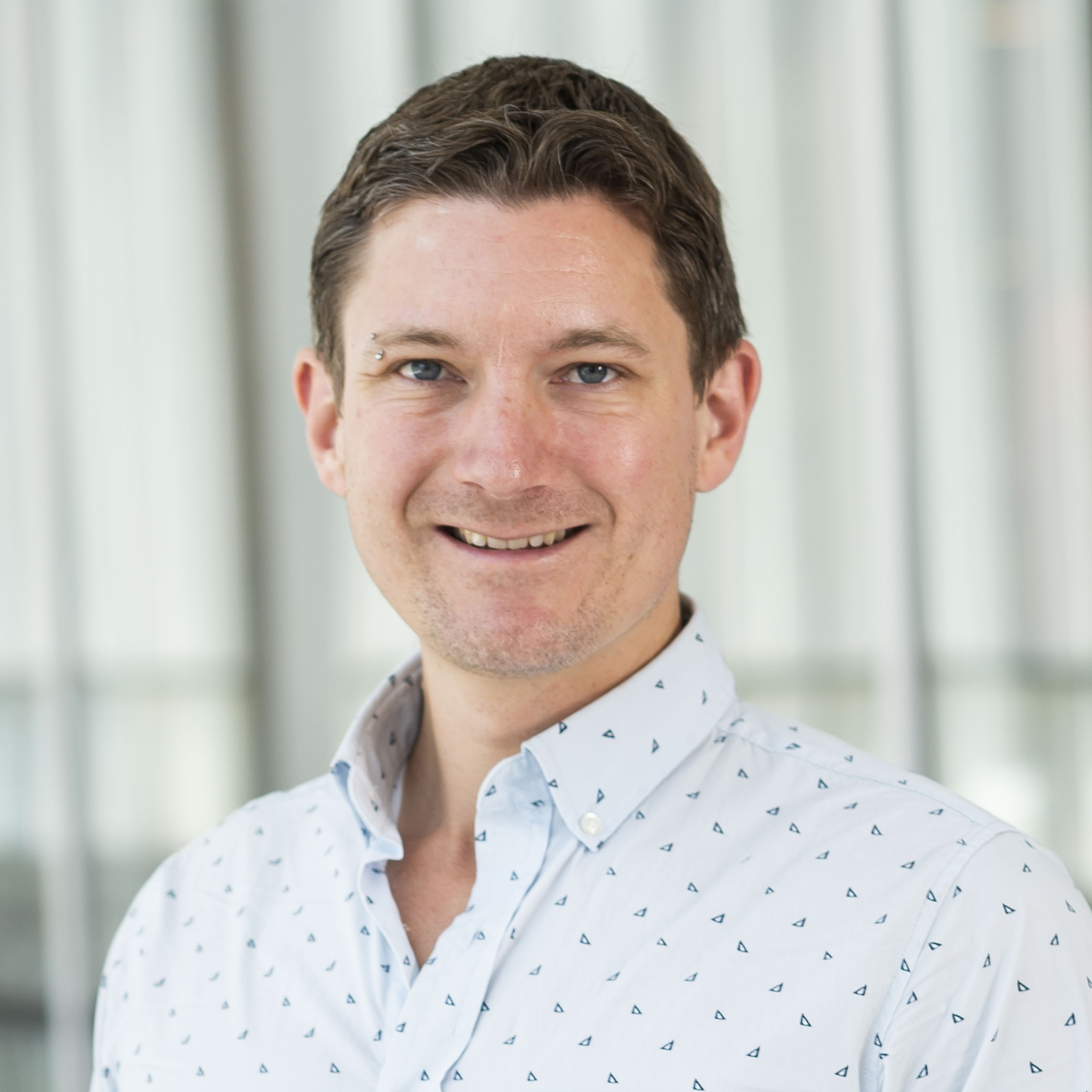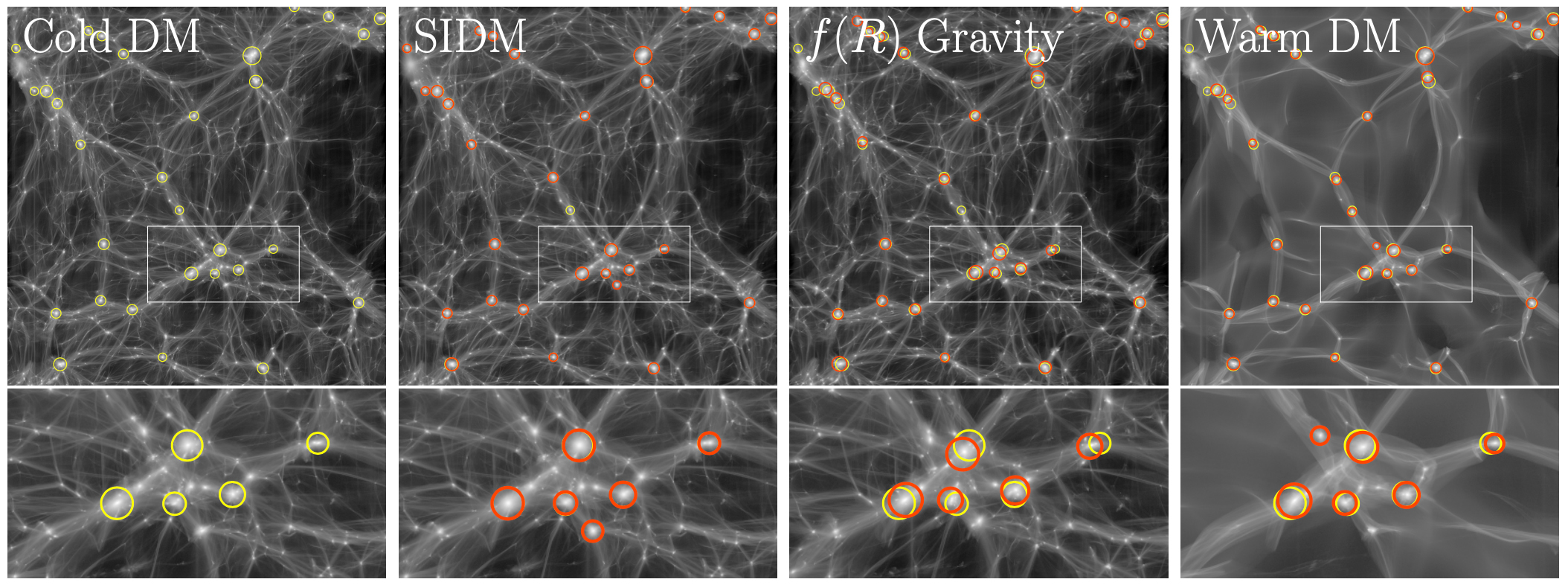UMD Astrophysicist Benedikt Diemer Receives National Science Foundation CAREER Award
He will use simulated galaxies to look for ‘imprints’ of elusive dark matter.
Benedikt Diemer, an assistant professor of astronomy at the University of Maryland, received a Faculty Early Career Development (CAREER) award—the U.S. National Science Foundation’s most prestigious program for early-career faculty members who have shown leadership in research and education.

The five-year, $1 million award will enable Diemer to lead a new supercomputer simulation project aimed at identifying “imprints” of dark matter, an invisible entity that accounts for 80% of the universe’s mass but can only be indirectly observed via its gravitational effects. The project will be a collaboration between Diemer and researchers around the world, and the funding will also be used to hire a postdoctoral researcher and graduate student researcher at UMD.
The research team will run simulations to see how galaxies form and evolve under different properties of dark matter and gravity. The virtual universes that they create will stretch for hundreds of millions of light years and contain millions of galaxies, each situated in a “cosmic web” of dark matter.
Diemer is particularly interested in dark matter halos, or the points where dark matter becomes densest. The distribution of galaxies around halos and the distribution of matter within halos can offer hints about the very nature of dark matter and gravity.
“The big eventual goal is to figure out what dark matter is fundamentally, or whether gravity is modified with respect to Einstein’s theory of general relativity,” Diemer said. “Those are two big underlying questions—maybe even the biggest underlying questions about the universe.”
Because of the complexities of this project, Diemer said that receiving a CAREER award was an “unexpected” surprise. Their simulations will encompass an unprecedented range of dark matter and gravity models as well as a wide range of objects, from tiny dwarf galaxies to clusters of hundreds of galaxies bound together by gravity. While all of the models in their simulation suite have been previously tested, the challenge is to compare them in a uniform way so that even the smallest differences between them can be made apparent.
“It was an ambitious proposal, which made me wonder whether I was too ambitious,” Diemer said. “What I’m really excited about is that we’re getting to combine a lot of our prior work on dark matter with what we call baryons—the normal matter that we’re made of. When we build this big new set of parallel universes, there is no telling what we might find.”
When compared with surveys of the night sky, supercomputer simulations can help narrow the search for dark matter by ruling out models or identifying interesting effects worth closer inspection. Diemer said the timing of their project is “particularly good” because new data from the Rubin Observatory’s Legacy Survey of Space and Time (LSST) and NASA’s Roman Space Telescope are expected over the next five years.

Diemer’s CAREER award also involves an education component. Diemer’s team will develop an online “cosmology learning platform” with interactive elements to teach students and astronomy enthusiasts about the study of the universe. Diemer will also revive one of his earlier projects, The Fabric of the Universe—an arts and science collaboration he co-founded with Isaac Facio, a conservator at the Art Institute of Chicago—that taught cosmology in a more sensory way.
“We want to 3D print different models of the cosmic web—the weblike structures that dark matter makes—to allow people to explore in a tactile fashion how they vary on different scales and with different dark matter physics,” Diemer said.
The goal is to collaborate with other higher education institutions to share these 3D learning tools more widely.
Diemer’s CAREER award follows a $75,000 Sloan Research Fellowship he received in 2023 and a departmental Distinguished Faculty Teaching Prize in 2021.
Diemer came to UMD as a NASA Einstein Fellow in 2019 and joined the faculty in 2020. Before that, he was an Einstein Fellow and an Institute for Theory and Computation Fellow at the Harvard-Smithsonian Center for Astrophysics. Diemer received his Ph.D. in astronomy from the University of Chicago in 2015 and his master’s degree in physics from the University of Manchester in 2008.
As Diemer begins a new chapter of research, he is excited about what this work will mean for future scientists. Once complete, the team’s simulations will be made publicly available, which Diemer hopes will inspire “countless community projects.”
“It’s a big chunk of work to produce these simulations, but when we have them, there will be an almost infinite amount of stuff you can do with them,” Diemer said. “There will be so many different questions that we can look at and that hopefully other people will look at, too.”







